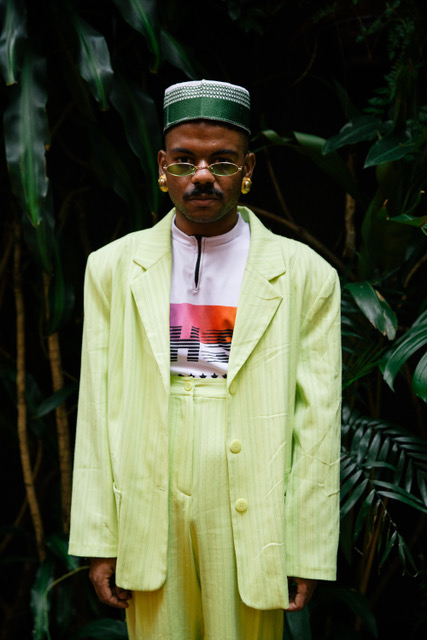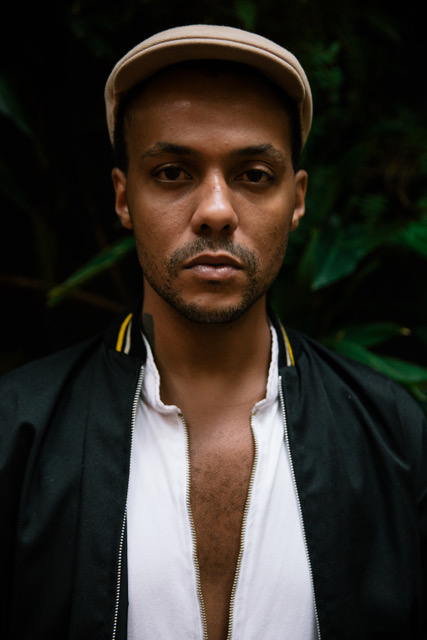In the Yoruba language, Dúdús, means “negro, black or dark”—black as the complete absence or complete absorption of light—transcendental and ineffable. It is also the name from which the digital platform Projeto Dúdús takes its title. A creation of visual artist and activist Gabriel Hilair, Projeto Dúdús (now a collective with members Guilherme Teixeira, Mayara Wui and Isaac Moraes Neto) focusses on Afro-diasporic and African artistic production, positioning itself as a space for recognition and inspiring magic.
As much as it is about celebration, Projeto Dúdús came about as a response to the lack of authentic representation of art and artistic production by black people. Brazil is quoted as having a population of roughly between 75 and 90 million African descendants living in the country (one of the largest in the world) and yet popular images and representations of who is Brazilian and what it means to be Brazilian have completely erased these narratives. As one of the last countries to abolish slavery, Brazil’s relationship with its citizens of African descent is complex—politically, economically and culturally it remains too ‘Global South’ for the West and locates itself as too West for Africa.
The Dúdús Instagram account is peppered with a legion of images by black artists—from Guyanese painter Aubrey Williams, Nigerian photographer Samuel Fosso to American multi-disciplinary artist Sonya Clark. What these images have in common is that they depict the multiplicity, complexity, nuance and richness of the black experience. Part obsession and part homage, Dúdús has become a safe space allowing Afro-diasporic and Africans in Brazil (and the world) to unfold as they see themselves through the lives and artistic expressions of those who look like them.

Beyond the visual, Projeto Dúdús ventures into other cultural interventions creating an aperture for cultural learning through what they call ‘Escuros’. These interventions include the recent gatherings exploring sounds of black Afro-diaspora music and rhythms where Isaac Moraes, Victor Apolinário, Guilherme Teixeira and Mayara Wui have played sets. In this sense the digital platform moves away from the purely visual and becomes a living archive—a living memorial giving context to space, place and time.
I took some time to chat to the creators about the project:
I’m interested in how you choose to curate the Projeto Dúdús page – what are some of the decisions that go into what work and which artists to include?
Gabriel Hilair: Cultural and artistic production is based on a set of knowledge crossed by power relations, their regimes of visibility and selective limits of enunciation. Given this, I bring in my curatorial practice in Dúdús; the challenge of combating devaluation, denial and concealment of the contributions of black knowledge and epistemologies while at the same time promoting the creation of a sphere in which black artists who do not have explicitly political work are valued.
Can you tell us about the music gatherings you host? Are these to be read as an extension of the digital platform in order to build community?
GH: Escuro (meaning “dark” in english) is a party that explores African and diasporic sounds through musical research. For example, I translated a text from the Red Bull Music Academy to the project column on the Red Bull website in October last year about FESTAC ’77—also known as the Second World Black and African Festival of Arts and Culture (the major international festival celebrating African culture through music, art, literature, religion and more). I made a list of 77 songs from artists who played at the festival and played only these songs at the party. However, while this may be read as an extension of the digital platform to build a community, it is not our intention. Dudús has a digital focus precisely because we recognize that the structures of colonialism are reproduced on the internet; for instance artist Tabita Rezaire discovered in her research for the work “Deep Down Tidal” that today’s fiber optic cables stay where the colonial routes were and that the most enslaved countries are those with the least access to the internet.
How do you see the evolution of the digital platform manifesting a few years from now?
GH: An even more perennial scenario than the one that has constituted in the last five years from advances in technology and a legacy of diverse militants and social movements. The major change was the change itself: we speak of protagonism, visibility, the rise to institutional spaces and the revolutionary effects that art together with politics can promote in our society and which has been (at the delicate moment that we live given that [the] president of Brazil is extreme[ly] fascist and liberal right) one of the main forces of resistance. It must be acknowledged that this is a milestone that is mainly linked to the movements of queers and black women across the country and to the expansion of activism around the world through cyber-space. Let’s continue hackqueering the diaspora.




















































